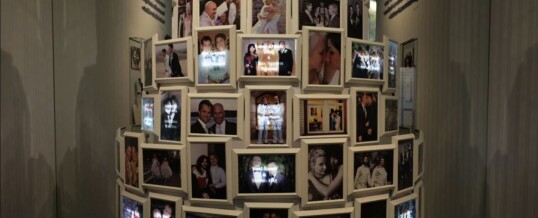
McLeod Group blog by Stéphanie Bacher and Stephen Brown, June 24, 2020
It is shameful enough for a Canadian museum to deliberately hide its LGBTQ2+ content from certain visitors. However, when the museum in question is dedicated to human rights, such a decision is ten times more offensive and actually betrays the museum’s raison d’être. The first article of the Universal Declaration of Human Rights recognizes that “All human beings are born free and equal in dignity and rights”. But apparently the Canadian Museum for Human Rights did not agree, at least not when it concerned the dignity and rights of LGBTQ2+ people.
Profits over principles
The Winnipeg-based museum, which opened in 2014, is mandated “to enhance the public’s understanding of human rights, to promote respect for others, and to encourage reflection and dialogue”. However, it was recently revealed that, from 2015 to 2017, when faced with homophobic school administrators, the museum disregarded that mandate and willingly censured its LGBTQ2+ content during school visits. In one instance, an employee was asked to physically block photos of same-sex couples (shown above), part of an exhibit on marriage equality, so that visitors would not be able to see them.
When a tour guide objected to the censorship of content on LGBTQ2+ rights, she was allegedly told by the museum management, “we have to honour the requests from the schools because they pay us for those tours”. Mentions of LGBTQ2+ rights were also deliberately omitted from tours for visiting diplomats and potential donors to the museum.
Response to the scandal
It took three years for these practices to be exposed publicly, but the reactions were swift. Former Winnipeg mayor Glen Murray immediately announced his resignation from the board of the Friends of the Canadian Museum for Human Rights. The museum president and CEO, John Young, declared on the same day that he no longer planned to seek reappointment when his term ends in August. Pride Winnipeg suspended its involvement with the museum, where it had been planning to launch the 2022 Fierté Canada Pride festival.
The museum’s executive team promptly issued an apology for self-censoring at the request of “some school groups”, but made no mention of the museum having done so on its own initiative for visiting dignitaries and potential donors. The letter recognized that the practice was “not just a painful repetition of a pattern of oppression, it is a profound betrayal”. It did not suggest that any staff were being held accountable for this “betrayal”, but did promise some new measures, including “the external review of complaints about systemic racism and discrimination”, as well as “specific initiatives to improve the inclusion of LGBTQ2+ perspectives” in its operations. While positive, these steps should be part of a broader reflection on the role and governance of the museum.
Don’t rock the boat
The erasure of LGBTQ2+ rights adds to the long list of controversies regarding the museum. It has on multiple occasions promoted a “soft”, apolitical view of human rights, making the museum “a model of complacency and promotion of the status quo”, in the words of a former employee.
For instance, in 2014, the museum asked Prof. Veronica Strong-Boag, a feminist historian focusing on women, children and social justice in Canada, to write a blog to mark International Women’s Day. A few hours after it was posted, the museum removed the blog from its website because it criticized the Conservative government’s “anti-woman record”. A year later, the museum pressured its curator of indigenous content to remove all uses of the word “genocide” and present a “balanced” view on indigenous rights, including the addition of examples of positive actions taken by the Canadian government after each mention of state-perpetrated atrocities.
The museum’s purpose is not to portray Canada as a champion for human rights, nor to focus only on human rights that enjoy broad popular support. On the contrary, the museum should promote critical thinking about Canada’s actions to promote and protect human rights in Canada and abroad. The concept of universal human rights is revolutionary. The museum should therefore not be shy about offending some groups or donors because of its stance, nor be afraid to challenge our own cultural beliefs and political systems.
The funding dilemma
The museum’s problematic “soft” approach to human rights is in part explained by its fear of displeasing actual and potential funders, including private donors and the municipal, provincial and federal levels of government. In recent years, budget cuts to the Canadian Heritage portfolio and fundraising difficulties have jeopardized the museum’s financial security.
While financial considerations should never be an excuse to discriminate or downplay past human rights violations, a serious reinvestment from the government would allow the museum to be more independent from private donors and focus on its main mandate, which is to promote all human rights. However, it would also increase the risk of political interference, especially to portray the government in a more positive light. The museum therefore needs an arms-length mechanism to ensure that its content never again betrays the universality of human rights, even when upholding them might make some people uncomfortable.
[Postscript: The day after this blog was published, the museum’s president/CEO resigned.]
Stéphanie Bacher and Stephen Brown are respectively a Ph.D. candidate and a professor at the University of Ottawa’s School of Political Studies. Photo: Teghan Beaudette/CBC.
